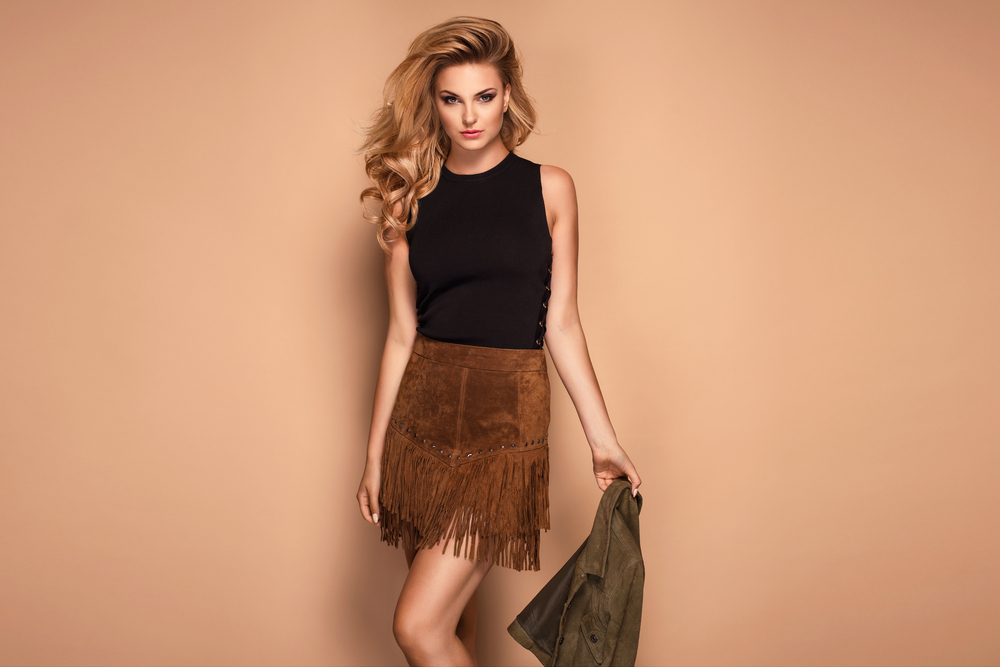
Modeling is an art form that has captured the attention and admiration of people across the globe. It is a profession that not only requires striking looks but also tremendous skill and dedication. The world of fashion and runways is enticing, glamorous, and filled with secrets that make it all the more captivating. In this article, we will unveil some of the hidden aspects of modelling and explore the intriguing world behind the scenes.
1. The Beginning of a Modeling CareerModeling is often seen as a dream job, but it takes a significant amount of effort to break into the industry. Aspiring models typically start by building a portfolio of professional photographs showcasing their versatility and unique features. These portfolios are essential tools for agencies and designers to assess a model's potential and style. The modeling industry thrives on diversity, embracing individuals of different sizes, ethnicities, and backgrounds.
2. The Role of Agencies
Modeling agencies play a crucial role in shaping a model's career. These agencies act as intermediaries between models and clients, scouting new talent, negotiating contracts, and representing models in the industry. They also provide models with support and resources to enhance their skills and develop their portfolios. Agencies work diligently to match the right models with the right clients, ensuring a successful partnership.
3. The Fashion Photoshoot
A fashion photoshoot is a carefully orchestrated event that brings together a team of professionals, including photographers, stylists, hair, and makeup artists. These shoots aim to capture the essence of a designer's vision, showcasing their clothing and accessories in the best possible light. Models work closely with the creative team to convey emotions, poses, and expressions that align with the designer's aesthetic. It is a collaborative effort that requires both technical skill and artistic interpretation.
4. The Runway Experience
The runway is where models truly shine, showcasing the latest fashion trends to an eager audience. Walking the runway requires models to master the art of strutting with confidence, grace, and precision. They must flawlessly present the clothing and accessories while captivating the audience's attention. Runway models need to maintain poise even in the face of intense pressure, long hours of rehearsal, and the high expectations set by designers.
5. The Importance of Networking
Networking is a crucial aspect of a successful modeling career. Models attend fashion shows, industry events, and parties to connect with designers, photographers, and other professionals in the field. Building relationships and establishing a strong presence within the industry can open doors to exciting opportunities. Social media platforms like Instagram have also become valuable tools for models to showcase their work and engage with their audience.
6. The Challenges and Myths
While modeling may seem glamorous, it is not without its challenges. Models often face intense competition, long hours, and strict beauty standards set by the industry. Maintaining a healthy body image and developing a thick skin is vital in overcoming these hurdles. Additionally, the notion that models lead a life of luxury and constant excitement is a myth. Behind the scenes, models work diligently, balancing auditions, fittings, and photoshoots.
7. Frequently Asked Questions
Q1: How tall do models need to be?A1: While height requirements can vary, most fashion models are at least 5'9" tall for women and 6'0" tall for men. However, there are exceptions, especially in sectors like commercial and fitness modeling where diverse body types are sought after.
Q2: Can anyone become a model?
A2: The modeling industry embraces diversity and uniqueness. If you have the passion, dedication, and the right look, there is potential for a modeling career. It's important to build a professional portfolio and connect with reputable agencies.
Q3: Is age a barrier in modeling?
A3: Age is not necessarily a barrier in modeling. Different sectors of the industry cater to various age ranges. From child modeling to mature modeling, there are opportunities for models of all ages.
Q4: What types of modeling are there?
A4: There are multiple types of modeling, including high fashion, commercial, plus-size, fitness, and editorial. Each sector has its specific requirements and appeals to different clientele.
Q5: Do models have control over their image?
A5: Models collaborate with a team of professionals, including photographers and stylists, to create their images. However, in today's digital age, models have greater control over their personal branding and can shape their image through social media platforms.
In conclusion, modeling is not just about looking beautiful and striking poses. It is an art form that encompasses collaboration, dedication, and constant reinvention. The world of fashion and runways opens doors to endless creative possibilities. Through this article, we have unveiled some of the secrets and intricacies that make the world of modeling so captivating.
Other useful resources
- https://en.wikipedia.org/wiki/Category:Models_by_modeling_agency
- https://en.wikipedia.org/wiki/Category:Modeling_agencies
- https://en.wikipedia.org/wiki/Modeling_agency